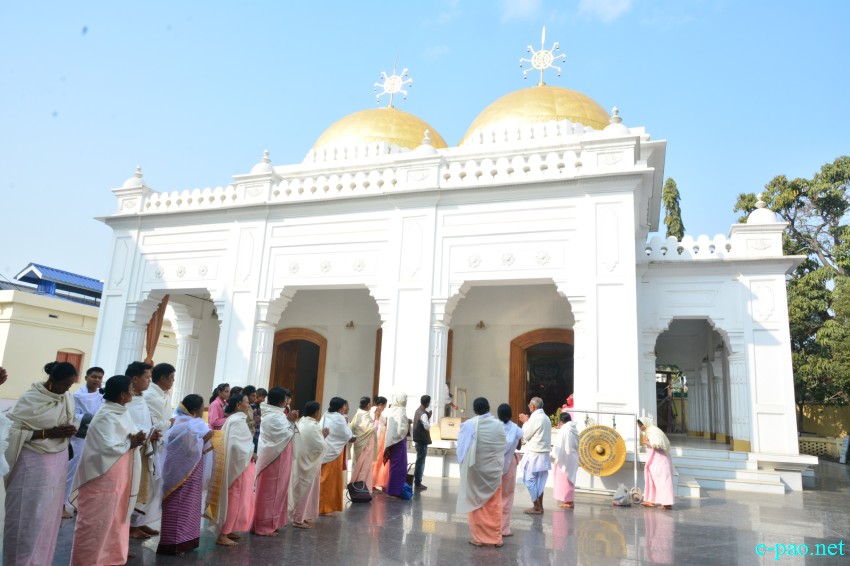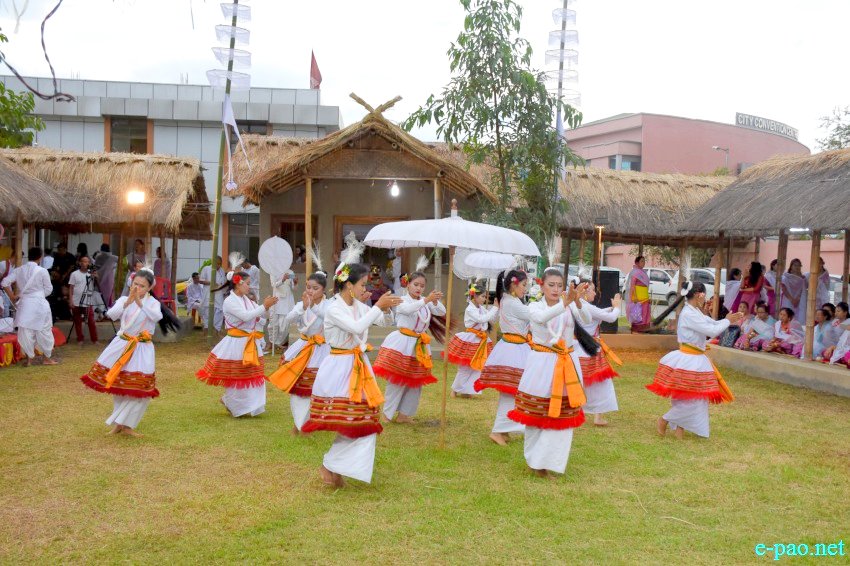Cultural Heritage of Manipur - As a Tourism product
Khuman *

Shree Shree Govindaji Temple at Palace Compound, Imphal in January 2016 :: Pix - Lamdamba Oinam
The write-up is about the Cultural Heritage of Manipur from the point of view of tourism. Manipur - once upon a time princely state represents mosaic fashion of art & culture, tradition, religion and many more. We can discuss the Cultural Heritage of the state in different aspects - History, Monuments & Museums, Living Culture & Performing Arts and Religions.
1. HISTORY: - It is very important to realise and discuss the importance of history. Like other tourist destinations in the entire world; MANIPUR is also having its own golden history. The history can be of monument, art & crafts, lifestyle, culture, religion etc. History has to be based on evidence and it should have a historical sources.
The sources of history are differing according to the periods. The Archaeological evidences tell about the history of different time periods. To strengthen and more research about the history of Manipur is the need of the hour.
The history of our erstwhile Manipur Kingdom based on the written manuscript the Royal Chronicle "Cheitharol Kumbaba". Details available from such written manuscripts are main information use in the tourism industry. A professional in tourism industry must use such information with a firm discipline to market history of a particular location as a tourism product.
While describing about the historical background of a particular destination one must avoid personal bias and other make-up interpretation. One has to be very carefully in describing and explaining the history. Some of the notable historical spots of Manipur are Kangla Fort, Khongjom War Memorial Complex, Bir Tikendrajit Park and Moirang.
2. MONUMENTS & MUSEUMS: - Monuments and Museums are very interesting spots for tourism industry. Manipur - a north-eastern state in India is also having many interesting and unique monuments & museums.
One of the most famous monuments in the state is Shri Shri Govindaji Temple and its complex located in the Konung, Imphal. The architectural design is unique. Structures namely main temple, beitoph and pillars of the mandap in the complex of the temple are worth to recall our history and culture.
The Manipur State Museum is also one of the most important museums in the state to understand our history and culture. The Pottery Exhibiting in the Archaeological Gallery of the museum is one of the perfect galleries to understand the culture of Pottery making, uses and types.
There are also many well-stocked galleries namely Archaeological Gallery, Musical Instrument Gallery, Ethnological Gallery, Jalan's Gallery, National-History Gallery, Art Gallery, Children Gallery and Hiyang Hiren (Royal Boat) Shed in the museum. Each and every artefact is telling the history and culture of our bygone era.

Ibudhou Marongkhong Chingdrensana Pakhangba Haraoba at Govt Dance College, Imphal in June 2019 :: Pix - Lamdamba Oinam
3. LIVING CULTURE "LAI HARAOBA":- The entire landscape of the state is doting with shrines. The festival of Lai Haraoba is a living culture. The Meitei Society still celebrating the festival of Lai Haraoba to protect, preserve and maintain its sanctity. Lai Haraoba is celebrating every year and it is the primary ritual observance of the Meiteis.
Meiteis were converted into Hindu Religion in the 18th Century during the period of Maharaja Pamheiba; the Lai Haraoba is still practicing and popular because of its ritualistic embodiment of the life world of the Meiteis Community. And, it is entirely outside the Hindu Religion framework.
The literal meaning of the Lai Haraoba is "Pleasing of the Gods". Here Gods means only the pre-Hindu Gods and Goddesses who were supposed to take-care the life of the primitive Meiteis. The festival with many ritual practices is generally performed during the summer season before the arrival of Monsoon. It is performed in different parts of the Valley.
Maibi, Maiba and Penakhongba along with local people conducted the ritual performance of the Lai Haraoba. The temples are devoted to the local deities. There are three types of Lai Haraoba namely, Kanglei Haraoba, Chakpa Haraoba and Moirang Haraoba.
All these features are valuable tools for practicing tourism professional. These are the important Cultural Heritage of the state to promote the Cultural Tourism. This heritage requires active effort on our part to protect and preserve it.
* Khuman is a frequent contributor to e-pao.net
This article was webcasted on Augst 02 2023.
* Comments posted by users in this discussion thread and other parts of this site are opinions of the individuals posting them (whose user ID is displayed alongside) and not the views of e-pao.net. We strongly recommend that users exercise responsibility, sensitivity and caution over language while writing your opinions which will be seen and read by other users. Please read a complete Guideline on using comments on this website.







